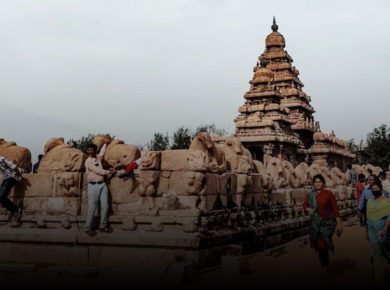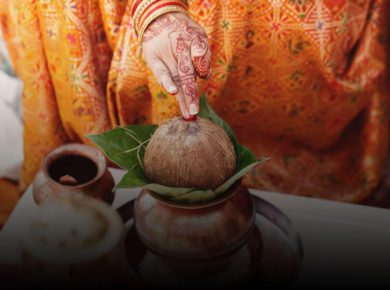Medieval Architecture Styles (Other than Indo-Islamic)
Rajput Architecture Style
Rajput palaces – built as innercitadels surrounded by the city and enclosed by a fortified wall as at Chittorgarh and Jaisalmer. Some forts, such as those at Bharatpur and Deeg, were protected by wide ditch filled with water surrounding the fort.
- Jaisalmer, Bikaner, Jodhpur, Udaipur and Kota Palaces → Built approx. 17th to early 18th century
- Bikaner is encircled by 5.63 km long Stone wall made of rich pink sandstone with five gates & three sally ports
- Jodhpur Fort dominates the city, which is surrounded by a huge wall nearly 9.5 km long with 101 bastions
- Meherangarh fort stands on a cliff with a sheer drop of over 36 metres.
Man Mandir
- The largest palace in Gwalior, was built by Raja Man Singh Tomar (1486-1516)
- Has two storeys above, and two below ground level overhanging a sandstone cliff
- This gigantic cliff is punctuated by five massive round towers, crowned by domed cupolas and linked by delicately carved parapets
Jaipur
- Built by Jai Singh, represents a synthesis of Rajput and Mughal architectural styles.
- The city is enclosed by a wall and has bastions and towers at regular intervals.
- Prominent structures at Jaipur
- Hawa Mahal (1799) has a five-storeyed symmetrical facade composed of 953 small casements in a huge curve each with a projecting balcony and crowning arch.
- Jantar Mantar, the largest of five observatories built by Jai Singh II in the early 18thcentury, others being Ujjain, Mathura, Varanasi & New Delhi.

Hawa Mahal

Jantar Mantar
Avadh Architecture Style
-
- Safdar Jung’s tomb, built in the honour of Safdar Jung (1739-1753)
- Bara Imambara → Built by the Nawab in 1784. Absence of pillars in the main hall (Simple & symmetrical in design)
- Chattar Manzil → Main attractions are the underground rooms and a beautiful dome surrounded by a gilt umbrella
- Kaiser Bagh → A quadrangular park with a baradari (pavilion) and yellow-coloured buildings on three sides.
- Roshanwali Kotiand Begum Koti → Situated at Hazratgunj with Italian style being more prominent
Kashmir Style
- Typified by use of woodwork.
- log construction using deodar trees for the construction of wooden bridges cold kadals or the wooden shrines called ziarats.
- Mosque of Shah Hamdan in Srinagar and the Jami Masjid at Srinagar built by Sikandar Butshikan (1400 AD) – examples of the wooden architecture.
- Fort of Hari Parbat, the Pattar Masjid (1623) and the Akhun Mulla Shah’s mosque (1649) are illustrations of art of stone building in Kashmir.
Punjab Architecture Style
-
- Influenced by the Mughal Style
- Features → multiplicity of Chattris /kiosks, fluted dome generally covered with copper or brass gilt and enrichment of arches by numerous foliations
- Notable example → Golden Temple at Amritsar (1764) built by the fourth Sikh Guru Ramdas.
Jain Architecture Style
- Prominent Feature → Chamukhs or four-faced temples.
- Four Tirthankars placed back-to-back to face four cardinal points.
- Entryinto these temples is also from four doors
- Notable example includes Chamukh temple of Adinath (Ranakpur) (1618 AD)

- Most spectacular of all Jain temples are found at Ranakpur and Mount Abu in Rajasthan
- Deogarh (Lalitpur, U.P.), Ellora, Badami and Aihole also have some of the important specimens of Jain Art












